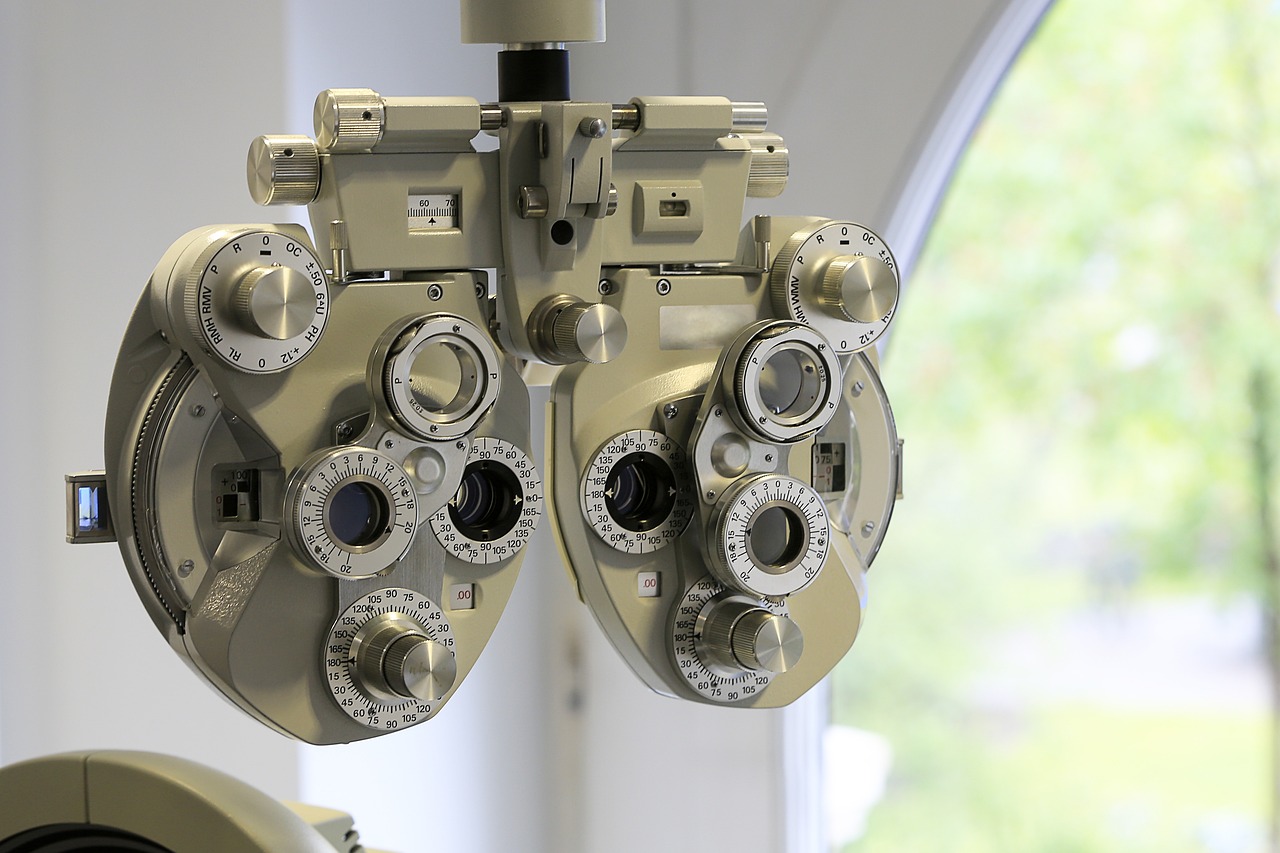Mountford Chambers delivers a nationwide and international service to clients, who are assured quality advice, advocacy and representation at all levels.
Mountford Chambers delivers a nationwide and international service to clients, who are assured quality advice, advocacy and representation at all levels.
News & Insights

A recent decision of the High Court highlights the importance of interrogating potential panel conflicts fully in the final hearing, particularly where a registrant is neither present nor represented.
On 16 August 2023 the High Court handed down its judgment allowing the appeal in Suleman v General Optical Council [2023] EWHC 2110 (Admin). The High Court found that a panel member should have recused himself due to his connections to the appellant’s former employer. His failure to do so tainted the entire proceedings.
This case is a clear example of the importance of fully interrogating potential panel conflicts in any fitness to practise proceedings as soon as they arise.
Background Facts
The appellant, Naseem Suleman, was a registered student dispensing optician who worked at the Huntingdon and St Ives branches of Specsavers in Cambridgeshire. The store managers made a number of allegations regarding Ms Suleman to the General Optical Council (“GOC”), the regulator for opticians. It was alleged that Ms Suleman had carried out restricted activities as a dispensing optician while unregistered. It was further alleged that she had dishonestly given her employers a false registration number to conceal that she was not yet fully qualified.
Ms Suleman’s case was that she had told another of the Specsavers employees that she was registered as a student and that her fellow employee had assured her that she did not need to be supervised. Ms Suleman therefore did not accept that she had acted dishonestly. The other employee and Ms Suleman’s then branch manager denied this account. Both the branch manager and the other employee appeared as witnesses for the GOC in the proceedings. The panel therefore had to assess the credibility of their evidence.
The fitness to practise hearing took place over the course of ten days, during which Ms Suleman was not represented and for the most part not present. Ms Suleman made limited representations in support of an application to adjourn but did not give evidence. At the close of the hearing the Committee found eight allegations against Ms Suleman proved, including the allegation of dishonesty, and determined that she was guilty of misconduct. The Committee found that her fitness to practise was impaired and that her name should be erased from the register.
The decision noted that: “The Committee considered that acting in the manner proved in particulars 1-5 the Registrant had put patients at risk of harm, breached the trust put in her by colleagues and Specsavers and undermined public confidence in Specsavers and the Profession.” (Emphasis added by the High Court)
Ms Suleman appealed the decision, arguing that the Committee’s decision was vitiated by bias because one of its five panel members had a connection to Specsavers which gave rise to apparent bias.
The Panel Member’s Connection to Specsavers
Simon Pinnington was one of the five-member Fitness to Practise Committee of the GOC (“the Committee”) and a Dispensing Optician.
On day three of the proceedings, Mr Pinnington disclosed that he was formerly a director of a Specsavers practice for 25 years, but had resigned three years prior when he retired. He noted that he had not had any contact with any of the people involved in the case.
The Chair noted that the Panel was previously aware of this fact and did not believe there was any conflict of interest. The legal advisor noted that this was a “tenuous connection” and advised the Panel: “I cannot see in any way, shape or form it would give rise to any potential conflict of interest.” This exchange took place in the absence of the appellant or any representative.
Mr Pinnington’s connection to Specsavers was not brought to the attention of the appellant, but was discovered later by her representative during preparation of the appeal. Further disclosure on this point was sought and provided, revealing a more significant connection between Mr Pinningon and Specsavers than had previously been divulged.
Mr Pinnington was a director and co-owner of the Hounslow Branch of Specsavers from 1994 until May 2019. He had owned 50% of the shares. In answer to further questions asked of him, Mr Pinnington stated that from 2019 onwards he was a locum dispensing optician at a number of Specsavers practices including Hounslow, Abingdon, Farnborough, St Albans, Prestatyn, Marlow, Chiswick, Camberley, and Wilmslow. In the 2019-2020 tax year he worked 110 days, in 2020-2021 he worked 46 days, and in 2021-2022 he worked 73 days, all as a locum dispensing optician for various Specsavers branches.
Constable J, ruling on a disclosure request prior the appeal, concluded that: “On the basis of Mr Pinnington’s share-holding and directorship for 25 years, together with his work thereafter as a locum, solely for Specsavers, the fair-minded and informed observer would conclude that Mr Pinnington had a business relationship with a Specsavers branch and with the brand more widely which can safely be described as a substantial, long-lasting and (at the time of the panel hearing) ongoing one. It is against this information that the test of apparent bias should be considered.” [11]
The Test for Apparent Bias
Mr Justice Chamberlain, giving the judgment of the High Court, summarised the test for apparent bias:
“The determination of an allegation of apparent bias involves two stages. First, the relevant circumstances must be found. Then, at the second stage, the court asks, ‘Would those circumstances lead a fair-minded and informed observer to conclude that there is a real possibility that the tribunal was biased?’: see Porter v Magill, [102]-[103] (Lord Hope). The fair-minded observer is ‘neither complacent nor unduly suspicious’: Belize Bank Ltd v Attorney General of Belize [2011] UKPC 36, [36] (Lord Kerr).” [20]
Mr Justice Chamberlain went on to summarise the position on automatic disqualification, quoting his own judgment in R (CPRE Somerset) v South Somerset District Council [2022] EWHC 2817 (Admin):
“21. There is an earlier line of authorities which identifies situations in which a judge or other decision-maker whose activities are governed by public law is automatically disqualified on the ground of apparent bias. This is so where the decision-maker is himself a party to the proceeding, the paradigm instance of a breach of the nemo iudex in causa sua principle. Similarly, the decision-maker will be automatically disqualified where he has a personal or pecuniary interest in the outcome, however small: Dimes v Proprietors of Grand Junction Canal (1852) 3 HL Cas 759.
22. In R v Bow Street Metropolitan Stipendiary Magistrate ex p. Pinochet Ugarte (No. 2) [2000] 1 AC 119, automatic disqualification was extended to cover the case where a judge was director of a charitable company controlled by an intervenor in the proceedings. There was, it was said, ‘no room for fine distinctions’ if the principle was to be observed that justice should not only be done but seen to be done: 135E-F (Lord Brown-Wilkinson).” [20]
Mr Justice Chamberlain noted that subsequent case law made clear that in all cases where the decision-maker had no personal or pecuniary interest, as in Pinochet (No. 2), the Porter v Magill test should be applied rather than the concept of automatic disqualification. [21].
Also noted was the case of In re Medicaments and Related Classes of Goods (No 2) [2001] 1 WLR 700, in which apparent bias was made out where a tribunal member had no pecuniary interest in the result but had applied for employment with one of two rival consultancy firms offering expert economic analysis in the case. It was noted that the tribunal member “might still harbour hopes that, sooner or later, she might find employment with this firm” and “this might induce in her, consciously or unconsciously, a reluctance to reject as unsound evidence advanced by the firm’s experts.” [23]
The High Court Decision
Although not bound by Constable J’s conclusions regarding the nature of Mr Pinnington’s relationship with Specsavers, Mr Justice Chamberlain agreed that: “The historic relationship between Mr Pinnington and Hounslow Specsavers was, on any view, both ‘substantial’ and ‘long-lasting.’” [26]. He noted that “A historic relationship confined to that single branch, which ended in 2019, might not have given rise in the mind of the fair-minded and informed observer to a real possibility of bias, though it might have aroused some concerns . . . But the relationship arising from Mr Pinnington’s work as a locum was, in my judgment, more significant. Although Mr Pinnington had not said whether at the date of the hearing he hoped to obtain further such work, the only proper inference from what he had said, and what he had not said, was that he did entertain that hope. In this sense the relationship with Specsavers was ‘ongoing.’” [26].
Mr Justice Chamberlain found that there were two features of Mr Pinnington’s relationship with Specsavers which were material: first, that his relationship as a locum was not with a single Specsavers branch, but with many such branches. It could therefore be reasonably inferred that the Specsavers holding company or some overarching entity must have been involved. Second, the number of days worked showed that Mr Pinnington must have been deriving (and, it could be inferred, expecting to continue to derive) significant income from this locum work, especially as it was his only source of work-derived income other than sitting as a GOC Committee member. [27]
Mr Justice Chamberlain noted that he had borne carefully in mind the asserted corporate structure and the fact that Mr Pinnington had no financial interest in the Huntingdon or St Ives branches and had never worked there. Nonetheless, he noted that the allegation which had been found proved against the appellant was that she had “breached the trust put in her by colleagues and Specsavers and undermined public confidence in Specsavers and the Profession.” [28] “This suggests that neither those making the complaint nor those formulating the charges saw the branches as wholly separate businesses.” [28] “Put shortly, there was something called ‘Specsavers’ which had placed its trust in the appellant and in which she had allegedly undermined public confidence.” [29]
Mr Justice Chamberlain therefore found that “the fact that Mr Pinnington entertained the hope to obtain more centrally allocated work from Specsavers would lead the fair-minded and informed observer to conclude that there was the possibility that, consciously or unconsciously, he would be disposed (i) to find substantiated complaints advanced to the GOC by those managing Specsavers branches that the appellant had engaged in conduct likely to injure the reputation of ‘Specsavers’ and/or (ii) to resolve evidential disputes in favour of those individuals and against the appellant.” [30]. Mr Pinnington should therefore have recused himself.
Mr Justice Chamberlain noted that, in this second aspect, the case was akin to In re Medicaments, save for the fact that the dispute in issue was one of fact rather than of expert evidence. However, this distinction did not assist the respondent. “If anything, a dispute of fact (particularly one turning on assessment of the credibility of witnesses) is more likely than a dispute between experts to engage concerns about apparent bias, because the rejection of a witness’s factual evidence as untrue is more likely to be seen as a personal criticism of that witness.” [31]
Mr Justice Chamberlain found that Committee’s decision was not saved because Mr Pinnington was only one of its five members. The panel sat for ten days and was bound to have discussed the case in detail. If one member was tainted by apparent bias, the Committee’s decision overall was vitiated. The appeal was therefore allowed and the matter remitted to a differently constituted committee.
Conclusion
This case offers a stark reminder for advocates, panel members, and regulators that in fitness to practise proceedings justice must not only be done, but must also be seen to be done.
Where a registrant is unrepresented or absent it is only more important that any potential conflicts of panel members are fully investigated and considered as soon as they come to light. Anything less presents the risk that the entire proceedings will be vitiated. This is something regulators can ill afford at a time when many fitness to practise cases are already drawn out and delayed beyond the breaking point.
Conflicts and connections abound in fitness to practise proceedings, in which panel members are intentionally chosen for their connections to the small world of the relevant profession. It is therefore imperative that any such issues are fully disclosed and explored. All parties must err on the side of caution to ensure the integrity and legitimacy of the proceedings, always bearing in mind the perspective of the “fair-minded observer.”
Vanessa Reid is a barrister at Mountford Chambers specialising in criminal defence and regulatory law. She is frequently instructed by professional regulators in fitness to practise proceedings, and has considerable experience presenting cases before medical and healthcare tribunals.

Tom Edwards looks at the impact of the shift from Joint Enterprise to Common Purpose in the five years since…

Ben Hargreaves explores the inherent challenges in the admissibility of sexual history in sex cases. Section 41 of the Youth…

An analysis of the law on fitness to plead and stand trial in the magistrates’ courts: Silas Lee reviews the…

Silas Lee, pupil barrister, reviews the statutory regime on witness anonymity. Anonymous witness orders are most commonly sought by the…